By Shirley Morton
The Hadj.
Shirley Morton of Argelès-sur-Mer looks back to her days as an air hostess, flying Muslim pilgrims from Kandahar in Afghanistan to Mecca and back.
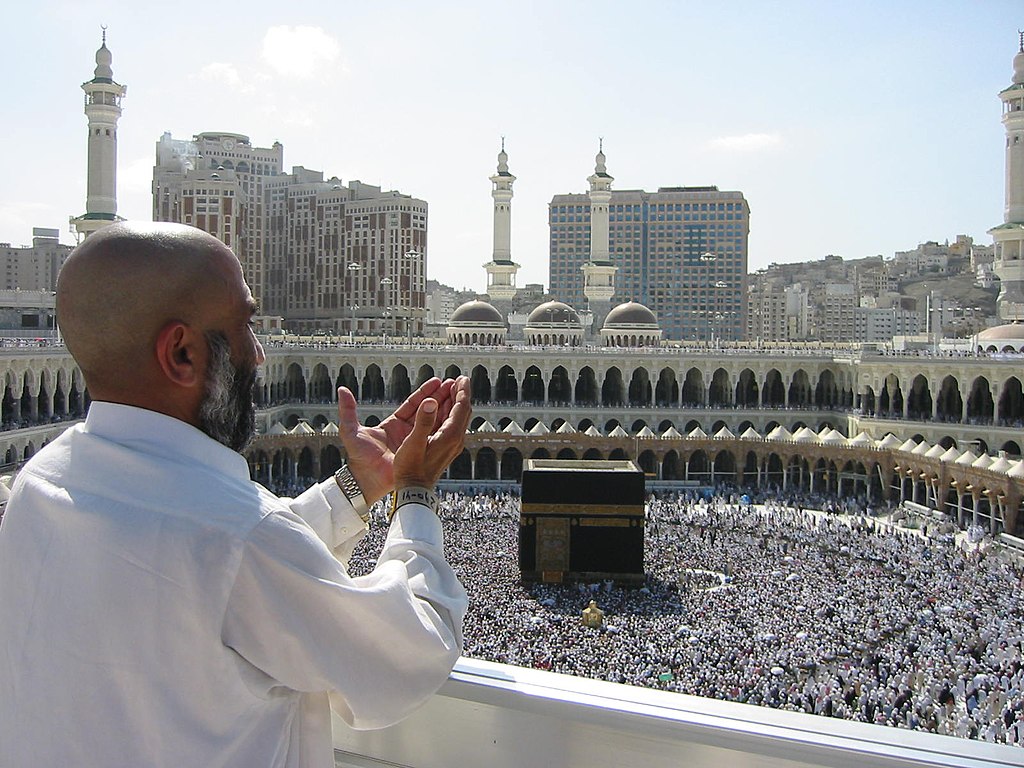
For Muslims the Hadj is the ultimate expression of worship. For me, it was an incredible culture shock and eye opening experience!
………………………………
I will start by giving you a little background information on the Hadj, and how I became involved.
Historically Muslims would gather at various meeting points in cities, mainly around the Arab world, and travel en masse towards Mecca in groups of tens of thousands of pilgrims. This was an extremely hazardous journey, on foot, by ox-cart and on camels. Many died from thirst or illness en route.
In fact in 1926, 12,000 Syrians alone, didn’t survive the journey, the total figure including all the other countries must have been horrific.
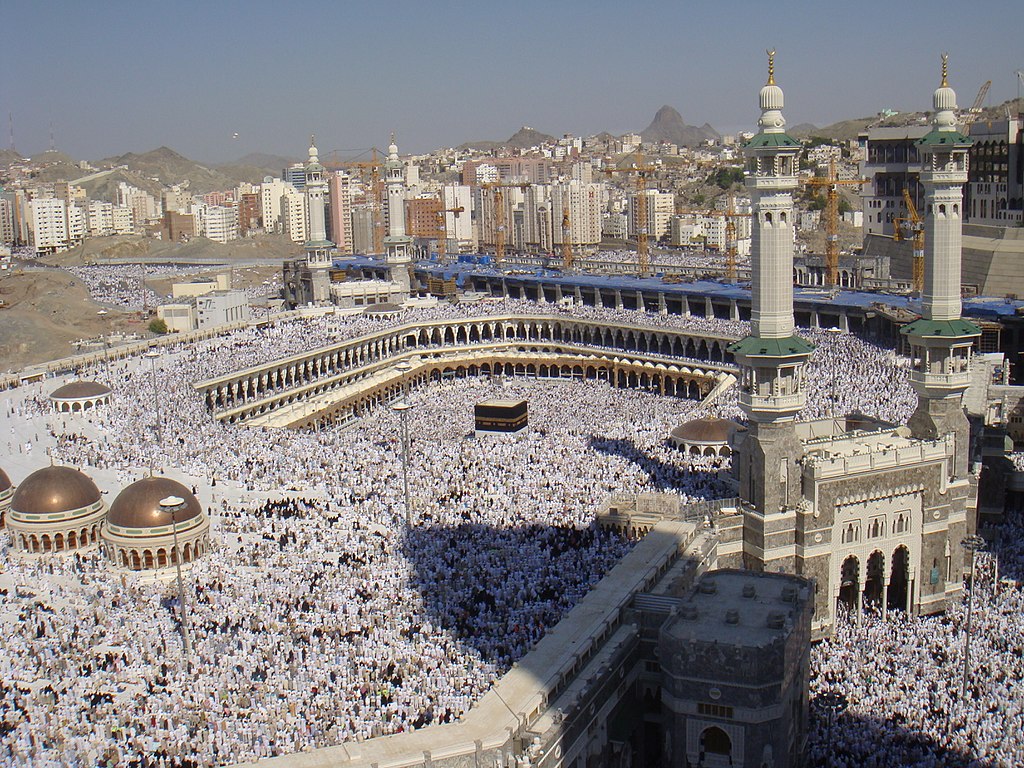
As the pilgrimage evolved, Muslims from many other areas of the world joined in, making part of their journey by ship. Once air travel became cheaper and more popular, special charter flights would be arranged. These flew whole groups from their meeting points to Jeddah, the gateway to Mecca.
I was rostered for one such charter, flying pilgrims from Kandahar in Afghanistan to Mecca and back over a 6 week period in March 1967.
As part of the Muslim religion you should make the pilgrimage at least once in your lifetime and due to the expense, many villagers would club together to pay for the eldest to visit Mecca before he died. Perhaps you can now visualise the state our passengers arrived in, after travelling hundreds of miles to the airport. Due to their age, some looked as if they were half dead on arrival!
Kandahar Airport had originally been built and operated by the American army. It comprised a runway surrounded by dust and dessert. Sand was continually blowing everywhere and covering the few Nissan huts and the low block of concrete accommodation which we discovered would be our 5* lodgings. We were to share a twin bedroom and bathroom with another crew member (female unfortunately!) and we were bussed to an American aide centre for meals and a recreation centre, i.e. a pool table!
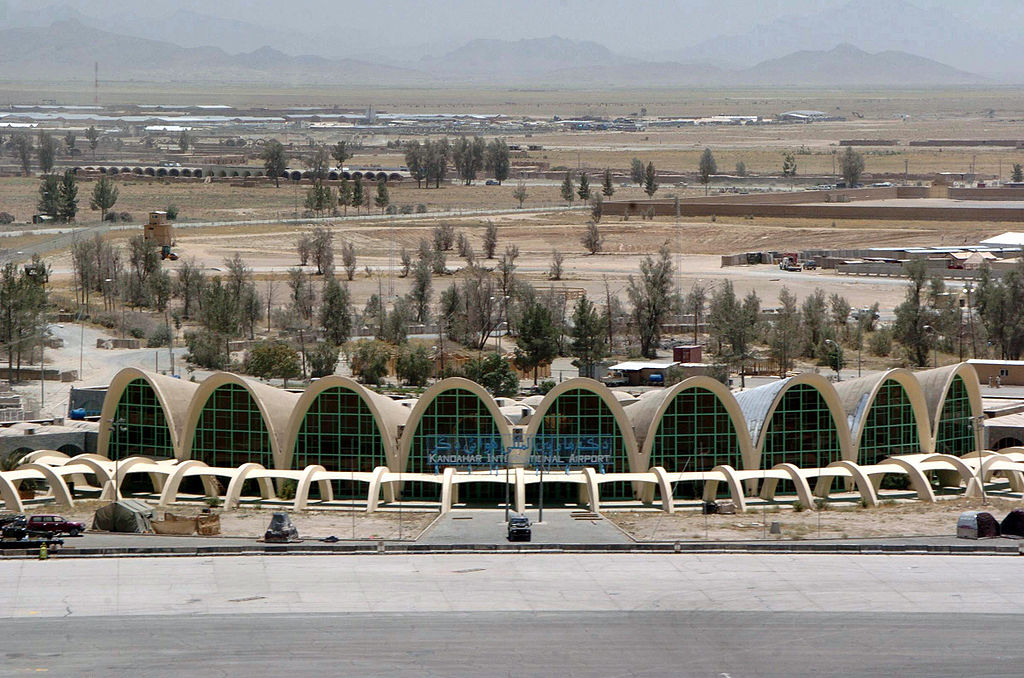
In 1967 with no internet for information and limited travel coverage on television, I was very naïve about local traditions and practices in somewhere so remote. Nowadays the coverage of the sad situation in Afghanistan makes you very aware of the dress code of Muslims and of the huge difference in the local’s everyday wear.
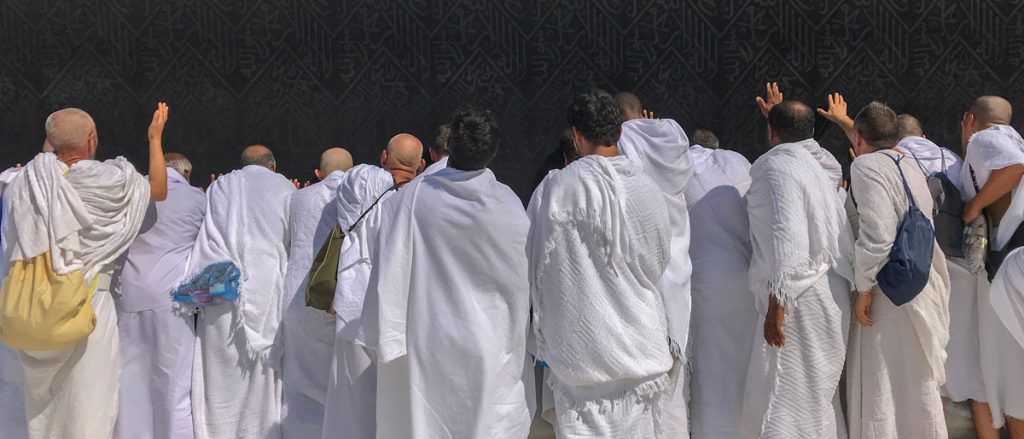
It may come as a surprise that there were virtually no security measures or restrictions on what the passengers brought onto the aircraft. Imagine my thoughts when, on the first of the flights, a trickle of bedraggled and distinctly grubby and confused elderly men approached the aircraft steps carrying an assortment of pots, pans, small paraffin stoves, with blankets/carpets slung over their shoulders.
I still wonder today what went through their minds, being greeted by young women, very smartly dressed in uniform, but exposing bare heads and legs and welcoming them with a broad smile! Apart from this, they had very little or no concept as to what an aircraft looked like, let alone trusting it to transport them anywhere.
Having managed to try and get our passengers seated, bearing in mind no one spoke a word of English, we were confronted by most sitting crossed legged on the seats clutching all their possessions tightly: no way were they about to relinquish anything to anyone.
How on earth were we going to be able to show them the life-jacket and emergency exit drills, let alone get them to sit with their feet on the ground and put a seat belt on.
I had terrible trouble trying to repress a fit of the giggles, not only was I facing a sea of knurled leathery faces, but it struck me that it could be convenient if I needed a bandage on the flight as they all seemed to have them wrapped around their heads! It was probably caused through panic on my behalf, as the task of getting the cabin prepared for take off and feeding and looking after this large number of people for the next 5 hours seemed insurmountable.
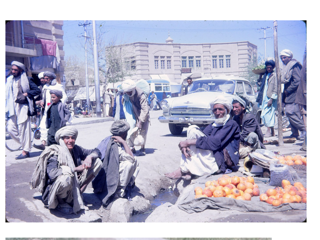
Eventually with the help of what appeared to be a group leader and with me playing a form of ‘charades’ we had our gentlemen seated. Some sitting on top of their belongings with the seat belt fastened around both them and their treasures.
On take off there were many loud prayers and chants and all the passengers raised their arms upwards as we trundled down the runway. It worked, we got airborne!
Our cabin service was minimal, we obviously had no alcoholic bar round to take and the meals were Halal. These had been specially prepared and loaded in individually sealed boxes. We did though have masses of tea to dispense.
Toilet care was another matter altogether. Our passengers had never used a conventional toilet and as a hole in the ground would be impractical at 30,000ft. the engineering department had modified it. The toilet bowl was surrounded by a strong wooden fixture suitable for squatting with the seat removed. The walls were completely covered in thick polythene. It took much time on our behalf to keep these anywhere near hygienic.
Sometimes we search for ‘glamour’ in our job!
Another slight difference from our normal type of passenger was the continual lighting of paraffin stoves in the cabin, complete with cooking pots atop. I don’t know what health and safety would say now-a-days.
We were asked which way was east when the time for ‘prayers’ arrived. We didn’t like to say it was a rather movable direction so pointed to the rear of the aircraft. They then squeezed into every conceivable spare place, some back to front on their seats, and with the leader in charge we endured what could only be described as the wail of animals in distress!
The first few flights would come back from Jeddah empty but later we would have passengers both ways so it was very tiring. We didn’t night stop in Jeddah ourselves but had a couple of days off at our salubrious accommodation in Kandahar between flights. Other crews operated on alternate days.
So how did we keep ourselves occupied? We availed ourselves of the crew transport and went to Kandahar town about a half an hours’ drive away. I remember walking along a road of open fronted shops dodging an open sewer. Craftsmen worked away whilst occasionally selling their goods.
We felt very conspicuous in European clothes as the women were all dressed in the Afghan version of a burkha. This had a tightly fitted type of skull cap on top, a mesh opening for their eyes and nose, which closely resembled a coloured mosquito net. The rest was a pleated cape which covered their ordinary clothes. We had of course to buy one ourselves thinking it would do for a fancy dress party. Mine has laid in our loft un-used. It was a bit tricky chatting someone up through the mesh but perfect for a ‘bad hair day’.
Other items for sale included old blunderbuss type guns, either from one of the many previous wars or cleverly copied fakes. Many sheepskin embroidered coats and waist-coats were also on sale and in 1967 these were the latest fashion item for hippies. Many shops displayed ‘hubbly bubblies’ in all shapes and sizes, beautifully decorated by hand and extensively used for smoking opium as well as tobacco. As you can see from the photo I bought all three though I didn’t indulge in the opium!
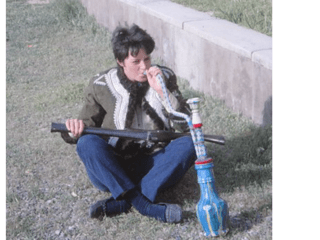
During our six weeks we encountered quite a lot of problems with the aircraft, passengers and local conditions. The time of year that we flew threw up some horrendous thunder storms and severe turbulence. Our aircraft in those days were propeller based and therefore didn’t fly at the altitude that avoids most of the inclement weather. Frequently we were strapped in tightly for long periods and it felt as if we were on a demented bucking bronco. On more than one occasion with a loud bang it was obvious we were hit by lightening.
You may well ask if this is dangerous? We are not linked to the ground so electricity disperses along the wing and through conductors on the wing tip. If you are hit on the nose of the aircraft, the lightening can travel along the aisle and out through the tail. This causes a lot of consternation with passengers as you can momentarily see a blue streak travelling through the cabin. On a couple of occasions on the Hadj we were hit so badly that on landing we could see burn holes in the wing where there had been a direct strike. We were then grounded for a while as the engineers had to repair and patch the skin.
A little disconcerting
Another traumatic incident was when one of our very elderly passengers was taken ill on the return flight. His colleagues carried him to a free area we had at the rear of the cabin and it was my dubious job to administer oxygen and if necessary resuscitation. It was a great relief when I was informed that a pilgrim who had been to Mecca should not be ‘touched’ by a woman or he would not go to paradise. I was therefore kept at a distance and had to instruct his fellow passengers in the art of oxygen administration and mouth to mouth.
I reported the problem to the captain who immediately instructed us to make sure he didn’t die on board. If this happened. it made our life extremely difficult. For both births and deaths the certification had to be carefully calculated as to what country we were flying over at the exact time. If we were over the sea, the nearest land had to be the country recorded and this was entered on the appropriate certificate.
We spent the rest of the flight trying to keep our passenger alive. He started the death rattle about an hour from our destination. God and Allah had a struggle but God favoured us and we landed with him just barely breathing. An ambulance met our aircraft. Later when we had gone off duty and took our transport to the Aid Centre for supper, we passed the ambulance upside down in a ditch – Allah had obviously won the argument in the end.
A new and rather frightening experience was when a severe sandstorm was forecast. We were grounded indefinitely and the aircraft was taken to a hangar so the engines and other outlets could be covered and protected. We were advised to stay in our rooms with the windows locked and the crack under the doors blocked up. We could of course not go out so, apart from water, we had no means of obtaining food.
I hadn’t realised how noisy fast moving sand thrashing against the windows would be or how dark it becomes. We very quickly noticed the heat building up in our room as there was no air conditioning. As with snow, the wind piles the sand against the windows and doors blocking any means of escape. The storm actually lasted about 5 hours and then it took a further few hours for bulldozers to dig the walkway and our accommodation block out. The runway clearance was a huge operation.
After our return to the UK we had earned a whole week off! I recall going to my parents home and allowing Mother to spoil me a bit. Her home cooking was amazingly welcome as pretty much the only meals available at the American centre were hamburgers, not only boring for such a long time away, but catastrophic for the waistline.
We made some firm friends out of the crew onboard and I stayed in touch with Jenny my room mate, for many years. She ended up marrying the flight engineer who had been on our crew in Kandahar. We worked together in the training department but later she moved to Malaysia and after a few years we lost contact.
It was an amazing coincidence that when I arrived in a Sussex hospital in labour with our second baby, Jenny had a few hours earlier also given birth at the same hospital. She heard my voice from a private room and arrived in the doorway with her new offspring in her arms. What a surprise. We chatted about old times although every few minutes I had to stop talking when a particularly bad contraction hit me. Husband Barry’s face was a picture.

I too was a stewardess back in the late 60s and did the Hadj run – we really earned our money – filthy flights often complete with chickens, the odd goat and gas primus stoves. I think all the newby crew got sent on that one – short straw or what! Planes were fumigated at the end of the Hadj season before the soft fittings were re-installed.
Didn’t have anyone die on board a Hadj but we did have one fatal heart attack on a flight to Salt Lake City. In order to avoid paperwork, Person was removed to a rear seat, strapped in and tucked up with a blanket and as we arrived into SLC we informed ground that we had a sick person who was sleeping, so could they organise onward medical care? Medics arrived and to our great surprise told us the person was dead. Shock horror!
Had a few giggles and dined out on a lot of tales!
That was a fantastic read. Thank you for sharing these vivid memories!
That was so interesting! Thank you for your memories!
Thank you for that story. It reminds me off my experience of the Hadj. I did one in 1979. I was a flight engineer then, I am now 84 (and retired). Every word you said, I can confirm. You did not mention that sometimes they would s fire up there stoves in the cabin and start cooking. This happened to me on a Jeddah to Jakata flight.
Happy memories
Byeeeeee
I read your recital with pleasure. You have a great sense of humour and we get the full picture of your experience. Thanks for sharing!
Your descriptions of the Mecca Run, Shirley, are amazing.
We can almost expérience the hostage-taking sand storms.
We can see you giving a mouth-to-mouth charade to préserve the life of a pilgrim , (It might have been more convenient if the passengers had been Russians!)
From a niece’s visit to Karachi,, she explained why the halal meals had to be sealed into hermétic boxes – so that the food should not be polluted by “unclean” hands. (Take note, my local cake shop, tho’ not for religious reasons!)
If you were still in the business you’d find that the Meridian Hotels are a darn sight more luxurious than the Nissan huts, but I think your good humour and tolérance have amply seen through this glamorous profession.
Thank you again for your lively report of an experience so many of us haven’t shared.